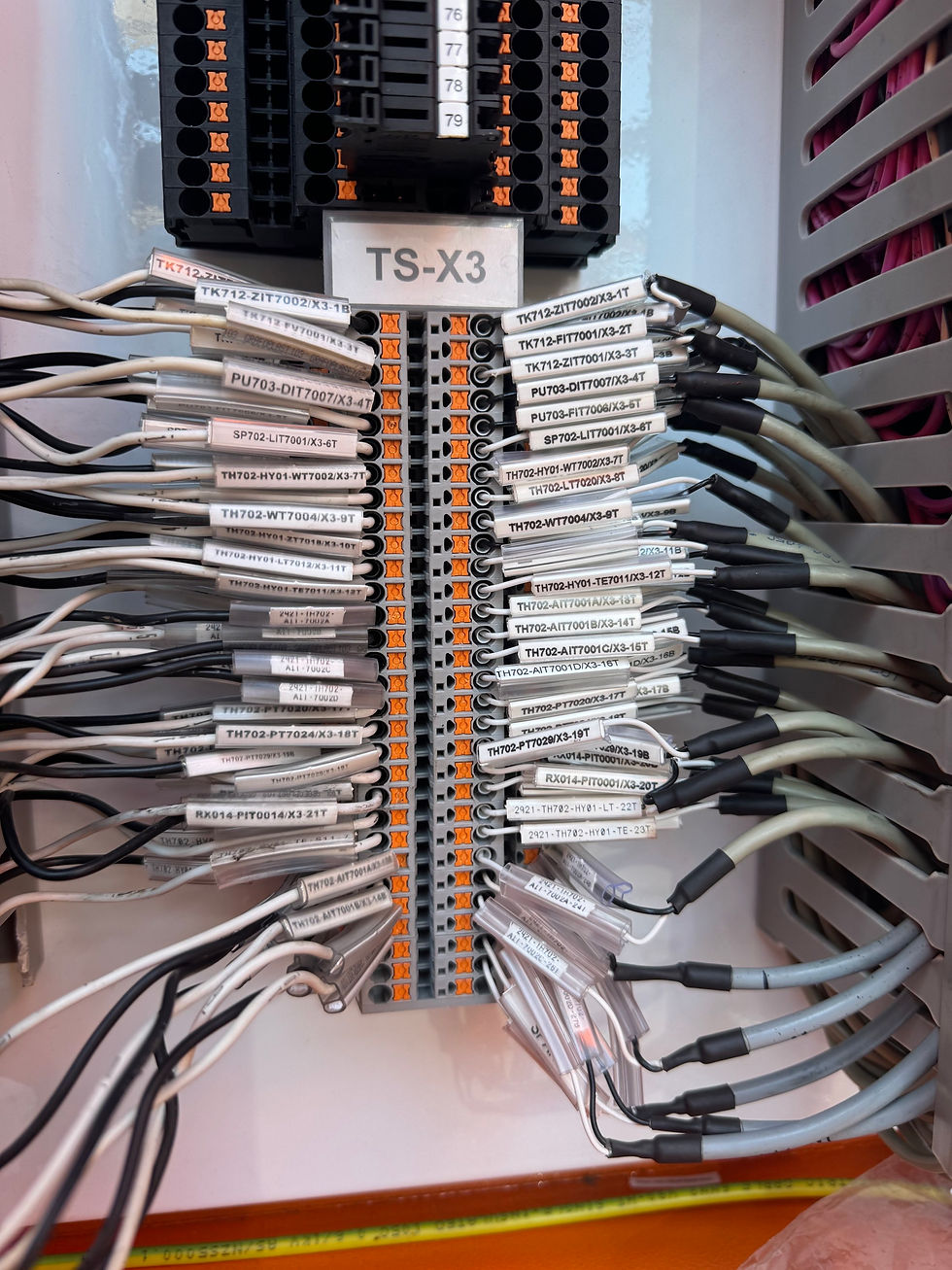Wired for Success: Unveiling the Critical Role of Labels in Electrical Installations
- Freddy

- Jan 6
- 2 min read

In the intricate world of electrical installations, labels on wires, devices, and equipment serve as the unsung heroes that ensure safety, efficiency, and compliance. Whether you're a seasoned electrician, an engineer, or a DIY enthusiast, understanding the significance of proper labeling can make a world of difference. Here’s why labels are crucial in electrical installations
Safety First
The primary reason for labeling electrical components is safety. Labels provide clear information about the function and characteristics of wires and equipment, reducing the risk of accidents. For example, identifying live wires and neutral wires through labels can prevent electrical shocks, short circuits, and potential fires
2. Efficient Troubleshooting
When something goes wrong in an electrical system, time is of the essence. Proper labeling allows for quick identification of circuits, wires, and devices, making troubleshooting more efficient. Technicians can rapidly locate the source of a problem, minimizing downtime and reducing costs associated with prolonged outages
3. Simplified Maintenance
Regular maintenance is essential for the longevity of electrical systems. Labels make it easier for maintenance personnel to understand the layout and connections within a system. This understanding is crucial when replacing parts, upgrading systems, or performing routine checks, ensuring that maintenance is performed accurately and efficiently
4. Compliance with Regulations
Adhering to electrical codes and standards is mandatory in most jurisdictions. Labels are often a requirement for compliance, providing necessary information such as voltage ratings, circuit numbers, and safety warnings. Proper labeling can help avoid legal issues and fines, ensuring that installations meet all regulatory requirements
5. Enhanced Communication
In large installations or projects involving multiple teams, labels facilitate better communication. They help ensure that everyone involved in the project, from designers and installers to inspectors and maintenance staff, has a clear understanding of the system. This clarity helps prevent misunderstandings and errors during the installation and maintenance processes
6. Improved Organization
Labels contribute to a more organized electrical system. They allow for the systematic arrangement of wires and devices, which is particularly important in complex installations. An organized system is easier to manage, expand, and modify, providing long-term benefits in terms of functionality and scalability
7. Future-Proofing
As technology evolves, electrical systems are often upgraded or expanded. Well-labeled systems are easier to modify because they provide a clear understanding of existing configurations. This foresight can save significant time and resources when changes are necessary, ensuring that the system remains adaptable and efficient
Conclusion
In conclusion, labels in electrical installations are not just a formality; they are essential components that enhance safety, efficiency, and compliance. By ensuring that wires, devices, and equipment are properly labeled, we create a safer and more reliable electrical environment. Whether you're designing a new system or maintaining an existing one, investing in proper labeling is a decision that pays dividends in safety and efficiency.


Comments